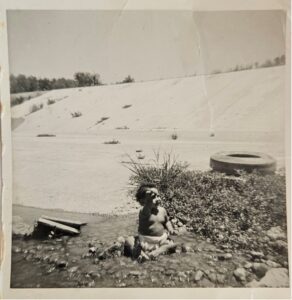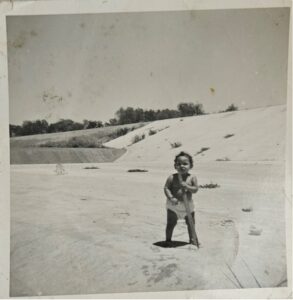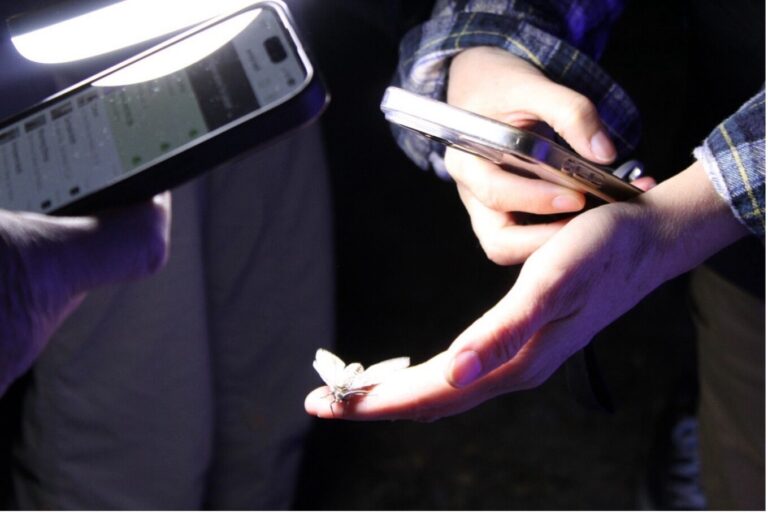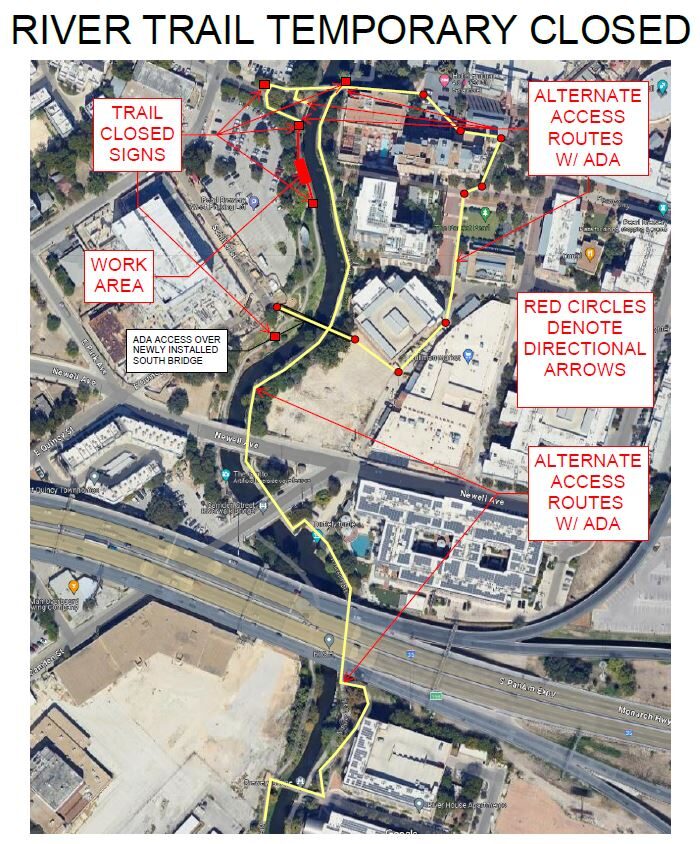The San Antonio River is more than just a waterway; it’s a living, breathing part of our community’s history and identity. As a descendant of the original settlers at Mission San Jose, I’ve witnessed firsthand how this river has shaped the lives of generations of San Antonians. Let me take you on a journey through time, exploring the deep connections between my family and this iconic river.
Childhood Memories: Espada Park and Beyond
Growing up, Espada Park was our sanctuary. Located along the river, I remember having one of my baby showers there, a fitting tribute to the place that had been such an integral part of my childhood. The park held different meanings as we grew older – from a family picnic spot to the notorious “lover’s lane” of our high school years.
Swimming in the river was a regular part of our community’s summers. The cool water provided relief from the Texas heat and created lasting memories with friends and family. It saddens me that presently, swimming or wading in the San Antonio River in Bexar County is prohibited by a City of San Antonio (COSA) ordinance. There is some hope that this might change in the future. Ultimately, I wish I had more photos of how the river used to be before any channelizing. As you get older, you often think about things like that—the importance of preserving memories.
My sister Debra Guerrero Pacheco Garcia-Age 1, 1962/Espada Park
A Legacy of Fishing and Family Bonding
For the men in my family, the river was more than a recreational spot—it was a provider. My father told me stories of how they caught many fish there. Armed with makeshift fishing rods crafted from bamboo found near Mission San Jose, they would spend hours trying their luck in the river’s waters. As they grew older and more prosperous, their fishing adventures expanded. They pitched in and purchased a boat, allowing them to fish in Corpus Christi or the Gulf of Mexico. But those early days by the San Antonio River laid the foundation for a lifelong passion.
The river and Espada Park were our safe spaces. In a time when our community faced discrimination, these spaces offered refuge. My dad and his brothers knew they could go there without being harassed or getting into trouble. They didn’t venture far beyond the boundaries of our neighborhood—the river and Espada Park were where they knew they’d be okay.
A River Runs Through Our History
As a Native American and a descendant of the Mission San Jose settlers, I see the San Antonio River as far more than a tourist attraction or an economic asset. It’s a lifeline that has sustained our community for centuries, a natural force that should be respected and preserved.
My daughter, upon learning of our Native American heritage, found new meaning in her runs along the river. She’s always been a runner, covering the distance between Confluence Park and Espada Park. But now, she says it feels different. She realizes that this is where we began, where our ancestors walked. Now when she runs from our house, through the church grounds, and along the river, she’s retracing the steps of countless generations before us. It’s priceless to have this connection.
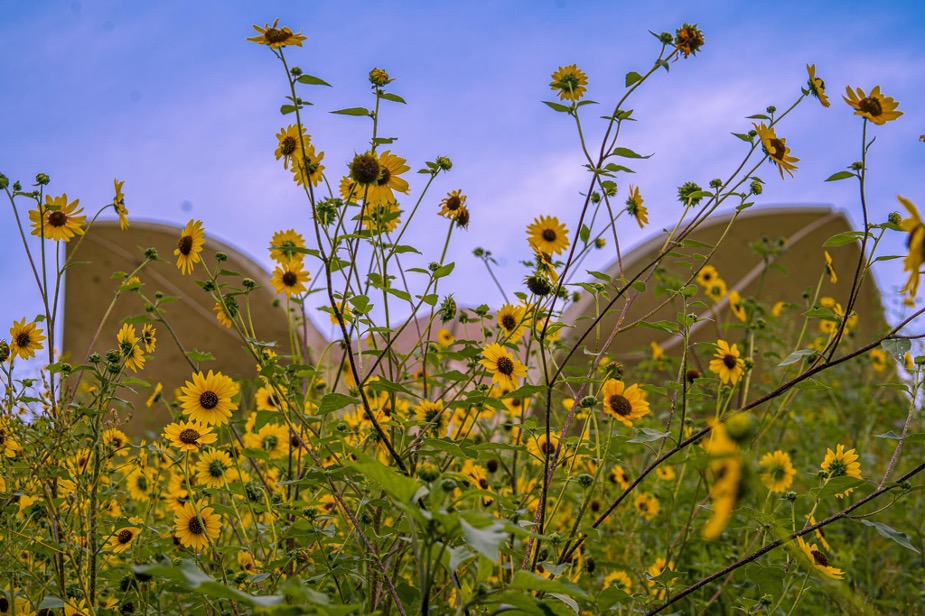
Confluence Park
But our connection to this land hasn’t always been secure. I remember when my family’s home near the mission was taken through eminent domain in the name of preservation. My grandmother Pacheco told me about the “Indians quarters” near the mission. She explained that it wasn’t a fort or soldiers’ quarters, but simply a place where people lived. Our family’s home was in the area of where the third “quarter” is today from the back gate into the mission.
When we received the letter condemning our property under eminent domain, making it a “buffer zone,” it was clear that little thought had been given to the living history of the area. My mother was a Romero whose Native American tribe helped build San Jose. She married a Pacheco, a descendant of one of the first 14 Canary Islander families. It raised important questions about what we’re really preserving—are we preserving buildings and land, or the living history and legacy of the families who have called this place home for generations?
Continuing the Tradition: New Ways to Enjoy the River
While we can no longer swim in the river like we used to, our connection to it remains strong. Today, you’ll find family members walking, running, or meditating along its banks. We still celebrate birthdays under the pavilions at Espada Park, keeping the tradition of family gatherings alive.
I often dream of a future where we might carve out a safe wading area for children, allowing new generations to experience the joy of connecting with the river. For now, we cherish the green spaces and the shade of the trees, grateful for the bonding opportunities these areas continue to provide.
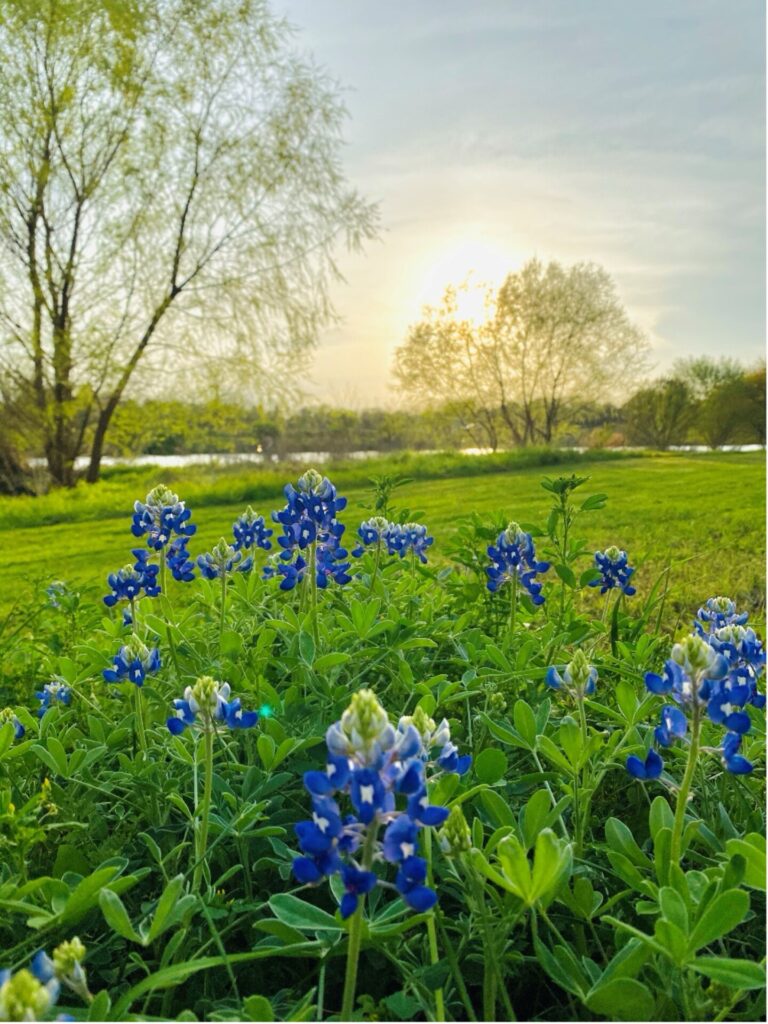
Bluebonnets at Espada Park
Looking to the Future
As we look to the future of the San Antonio River, I hope we can strike a balance between progress and preservation. We need to maintain the river’s cleanliness, respect its natural flow, and remember its significance beyond its economic value. I want people to remember and appreciate that the river was a life source.
The river has been a silent witness to the joys, struggles, and triumphs of countless San Antonio families. It’s more than just water flowing through our city; it’s the lifeblood of our community, carrying with it the stories and memories of generations past and those yet to come.
So, the next time you visit the San Antonio River, take a moment to reflect on its rich history. Remember the families who have lived along its banks, the children who once swam in its waters, and the countless stories it holds. In understanding and appreciating this legacy, we ensure that the spirit of the San Antonio River will continue to flow strong for generations to come.

Today’s blog is contributed by Brenda Pacheco. She is the “mother of an amazing adult woman who, like her mom, cares much about her community. Brenda relishes her Native American heritage and the space that was inhabited by her ancestors — the Pampopa tribe which helped build Mission San Jose in 1720. Today, Brenda still lives less than a mile away from the west wall of the Mission. She is a member of the San Jose church community and sits on a city board. She’s also an officer of Texas Business Women (TBW). Additionally, she is retired from Capital Group American Funds after 20 years of service.”
Share Your Story
What do you love about your waterway? Do you have fond memories of growing up, playing along one of the creeks? Do your family traditions include celebrating holidays or special events at a park near the water? Does your ideal day off work involve fishing, going for a walk or paddling the river? Whether you’re in Bexar, Wilson, Karnes, or Goliad counties, we want to hear how one of the waterways in the San Antonio River Basin has made a positive impact on your life. Head to the My River Way oral history project page to share your story today!

